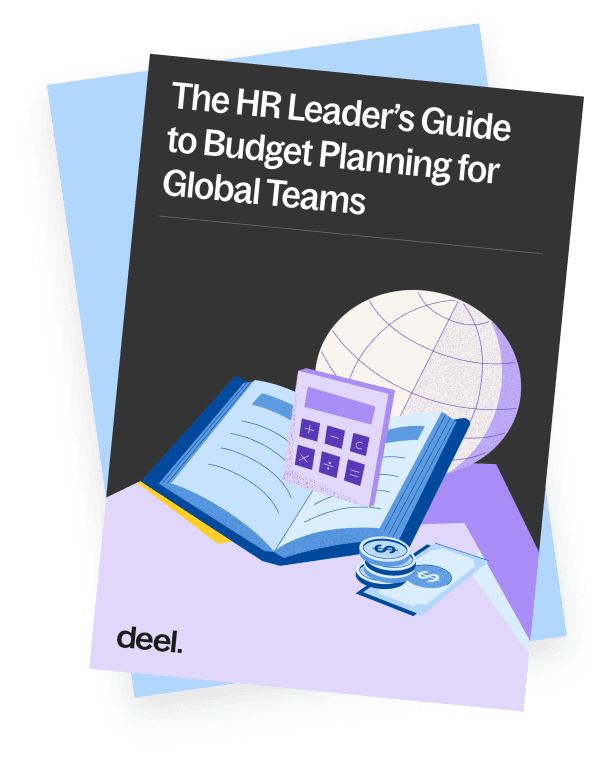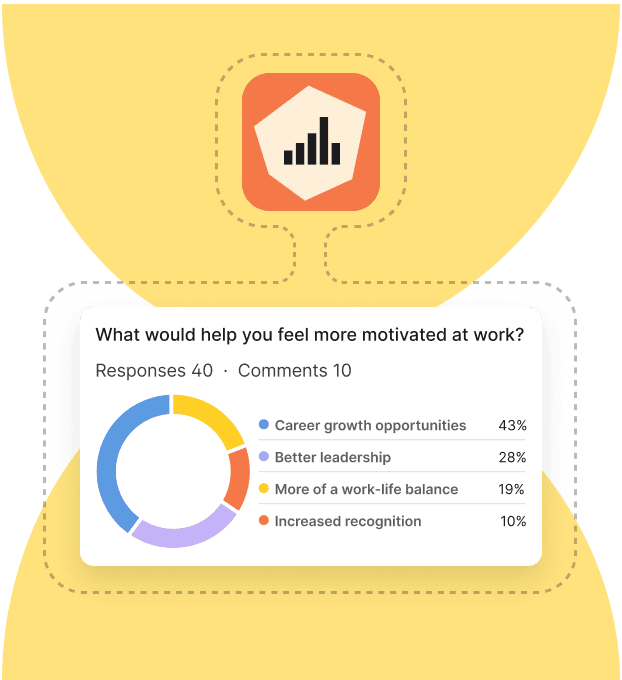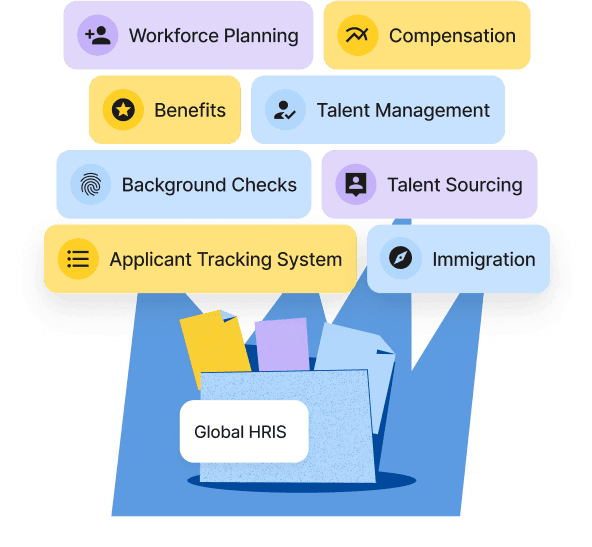Article
15 min read
How to Create an Employee Incentive Program That Works (+ Top Mistakes to Avoid)
Global HR

Author
Lorelei Trisca
Last Update
July 07, 2025

Table of Contents
Types of incentives to consider adding to your incentive programs
Step-by-step: How to create an employee incentive program
Examples of metrics for tracking the impact of an incentive program
Common mistakes to avoid when creating your incentive program
Implement compliant, impactful global incentive programs with Deel
Key takeaways
- An effective employee incentive program aligns with company goals, motivates specific behaviors, and supports short- and long-term engagement.
- Incentives are distinct from compensation and recognition, but work best when thoughtfully integrated with them to drive performance and worker satisfaction.
- Successful incentive programs are tailored by role, location, and motivation, and are regularly reviewed for fairness, clarity, and impact.
Types of incentives to consider adding to your incentive programs
The main types of incentives that can be used to drive the performance and engagement of your people are:
- Monetary incentives: These are direct financial rewards such as monetary bonuses, commissions, equity, or spot rewards, often tied to measurable outcomes like individual performance, sales goals, or company-wide results.
- Non-monetary incentives: These rewards don’t involve money. Instead they can be public recognition, professional development opportunities, or extra time off to boost work-life balance and serve as powerful drivers of motivation and loyalty.
- Team-based vs. individual incentives: These are rewards that differ by structure and distribution, with individual incentives focusing on personal achievements and team-based incentives encouraging collaboration and shared success among team members.
Company referrals are also considered a type of incentive. Many organizations run referral programs that reward employees for successfully referring hired candidates, using cash rewards, bonuses, or other benefits. These programs effectively encourage employees to support recruitment efforts while reinforcing a culture where employees feel trusted and valued.
Incentives differ from compensation but should be thoughtfully integrated into your overall compensation policy. When aligned with variable compensation, indirect compensation, and performance-based merit cycles, incentive programs can strengthen your total compensation plan and contribute to a more motivated, high-performing workforce.
Your incentive program should also consider timeframes. Short-term incentives, like spot bonuses or project-based awards, recognize immediate impact, while long-term incentives, such as equity grants or career development pathways, promote sustained engagement and retention.
In addition to tangible rewards, intrinsic incentives like meaningful work, autonomy, morale, and purposefulness can be essential in how your people feel about their contributions and your organization.
Step-by-step: How to create an employee incentive program
To create an effective employee incentive program, follow a structured approach that ties rewards to outcomes, scales across teams, and aligns with your organization’s goals.
Here’s how:
1. Clarify your goals
Start by asking: Why are we implementing this program?
If your focus is retaining high performers, increasing employee engagement, improving sales performance, or reinforcing company values, your incentive program must be tied to specific objectives.
If your organization is a tech company facing a high turnover, emphasize retention by including long-term rewards such as stock options, professional development stipends, or recognition of project milestones.
Alternatively, if your organization is in the retail sector with high seasonal demand and a large frontline workforce, your incentive plan should feature short-term cash bonuses, flexible shift options, and public recognition. These will help drive immediate performance and support your operational goals during peak periods.
Tip: Define your goals upfront to ensure your program is strategic, not just reactive, and aligned with your broader business priorities.
2. Identify what behaviors or outcomes to reward
Once you’ve clarified your goals, identify what specific behaviors, milestones, or results you wish to reward. This step helps ensure alignment between the incentives your program will offer and the performance outcomes you wish to promote.
Here are some examples of behaviors and outcomes to reward based on different objectives:
- Closing deals, if your organization’s goals are to drive revenue growth and meet ambitious sales targets
- Improving customer satisfaction scores to support goals around client retention, brand reputation, and service excellence
- Meeting deadlines on key projects to ensure timely delivery and cross-functional alignment
- Mentoring junior workers to foster a culture of knowledge-sharing, leadership development, and team resilience
Focus on measurable, observable behaviors that are within your people’s control and that support your organization’s overall strategy.
3. Segment by role, level, and location
Tailor your program by job role, seniority, department, and geography to make your rewards more relevant and equitable. Avoid a one-size-fits-all approach that risks creating disengagement, especially if your workforce is global or hybrid in nature.
Your sales team may thrive on commissions and bonuses tied to quotas, but your technical team may prefer flexible working hours and access to career development opportunities.
Similarly, your locally based workers may prefer in-person recognition or team events, while your global workforce may value digital rewards, additional leave, or asynchronous recognition delivered through internal platforms.
Tip: You don’t need to build completely separate programs; you can just segment them to allow for meaningful differences in how success looks across your organization.

4. Choose your incentive types
Choose the incentive mix that best fits with the goals, outcomes, and segments you’ve identified. Combine monetary, non-monetary, and team vs. individual rewards to create a well-rounded program that appeals to different motivations and work contexts.
Consider the following combinations of rewards that align with specific objectives:
- Individual cash bonuses combined with team-based profit sharing, to reward short-term sales performance
- Peer-recognition programs combined with flexible working options and professional growth opportunities, to improve worker engagement across departments
- Equity schemes or retention bonuses, to boost loyalty and workforce stability in key roles
Tip: Use surveys or past engagement data to identify what motivates your people. Don’t assume that money is always the top driver.
Surveys
5. Define eligibility and frequency
Make it clear who is eligible to receive incentives, how often rewards are given, and what the qualifying criteria are. This will avoid confusion and help build trust in your program’s fairness.
Set parameters like minimum tenure, role eligibility, or performance thresholds. Decide how often incentives are evaluated, e.g., monthly, quarterly, or annually.
While a startup might award quarterly spot bonuses for going above and beyond, an established organization may tie annual performance bonuses to formal review cycles based on manager ratings, KPI achievements, and company-wide financial results.
Define the rules that apply to your organization, communicate them clearly, and ensure they’re applied consistently to maintain transparency and equity across your teams.
6. Create a budget and get buy-in
Estimate the total cost of your program, including the proposed monetary rewards, software tools, and time to manage it. Present this in terms of ROI, emphasizing how it will reduce turnover, improve productivity, or align with revenue growth for your organization.
Highlight how your program will support your organization’s strategic goals. Your leadership will likely want to focus on this key area.
Consider the example of a 200-person company proposing to allocate 1.5% of its payroll to fund a tiered bonus program. How could you position this in terms of cost savings or performance gains to justify the expected costs of the program?
Position the program for measurable business outcomes to make the case more compelling and beneficial. If the company has a high annual turnover rate, for instance, creating a large cost impact, then show how the incentive program could improve retention. Even a small improvement may be enough to secure approval.

7. Train managers
Train your managers to apply your program consistently, equitably, and with strong communication skills. They should know how to explain your program’s key components, such as eligibility criteria, reward structure, and performance expectations.
Your managers should also convey your program’s intent and value in a manner that avoids bias, promotes inclusion, and reinforces trust. You’ll need to support them with clear guidance on how to recognize contributions fairly and handle your people’s questions with confidence.
Tip: Give your managers the tools they’ll need to lead by example, including playbooks, FAQs, and coaching to support and embed the incentive program into everyday team management.
8. Pilot and gather feedback
Before a full rollout, run a pilot program with a specific team or department. This lets you test whether the rewards are truly motivating, if the rules are clear, and how the program fits into real workflows.
Gather quantitative and qualitative feedback from participants and managers. Ask what worked, what felt confusing, and whether workers felt recognized and motivated by the structure and delivery of the incentives.
Consider this example: A company plans a peer-recognition program and runs a pilot with the marketing and operations team. Let’s say the marketers loved the public praise element, but the ops staff preferred a quieter Slack shoutout and a lunch voucher.
This example illustrates how team-specific insights help shape a program that resonates across different work styles and preferences. A more inclusive, company-wide version of the program could allow workers to choose between public recognition and private acknowledgement, ensuring the rewards feel meaningful to the individual.
9. Measure and refine
Define success metrics and regularly evaluate whether your incentive program meets its original goals. Use a combination of data and anecdotal observations to identify gaps.
Uncover blind spots and improvement opportunities by asking yourself:
- Are some teams under-rewarded?
- Are incentives still aligned with shifting priorities?
- Are certain types of rewards consistently underutilized?
- Do your people feel the program is fair and motivating?
- Are managers applying the program consistently across departments?
Tip: Adjust your program based on your results. Iterate as required to ensure your incentive program remains relevant, impactful, and aligned with your organization’s evolving needs.
Examples of metrics for tracking the impact of an incentive program
Use these metrics to help elicit outcome-driven and engagement-focused insights:
- Retention rates: Monitor your staff turnover, especially among top performers. A fall in voluntary exits may signal that your program is boosting loyalty.
- Engagement scores: Use survey feedback to assess how valued, motivated, and fairly rewarded your people feel over time.
- Incentive participation rates: Track the number of eligible workers participating in the program. Low participation rates may suggest unclear rewards or a lack of relevance.
- Performance vs. incentive correlation: Compare incentive recipients with performance data to see if rewards are going to the right contributors and driving results as intended.
- Manager utilization rates: Measure how often your managers apply the program. Inconsistent use may require better training or clearer guidance.
- Cost per rewarded outcome: To understand the program’s ROI, evaluate how much you’re spending per key result, such as a retained worker or increased productivity.
Examples of effective incentive programs
Here are some real-life examples of effective incentive programs adopted by companies across different industries and team structures:
1. Sales teams: Sales performance incentive funds (SPIFFs)
Sales performance incentive funds (SPIFFs) are short-term, targeted incentives designed to motivate sales teams to achieve specific objectives. Here are two examples of how SPIFFs are used:
- Hometap Equity Partners integrates SPIFFs into an incentive strategy emphasizing career development and recognition. Non-monetary rewards such as career pathing opportunities, Toastmasters competitions, and mock call practices recognize individual achievements and provide avenues for professional growth.
- Lusha includes incentives such as bonus days off, gamified competitions, and celebratory rituals upon closing deals, combined with prizes like electric scooters and Dyson hair dryers. These help foster a positive and engaging sales environment and promote healthy competition and team cohesion.
2. Engineering and innovation: Hackathons and “20 percent time”
Google uses hackathons and 20 percent time projects to boost innovation and incentivize its engineers to pursue passion-driven ideas. Winning a hackathon provides greater visibility within the company and can lead to career development opportunities, leadership roles, and funding for ground-breaking projects born out of the hackathon.
3. Immediate recognition: Spot bonuses using pre-paid cards
Many companies offer immediate gifts for top-performing individuals through spot bonuses or awards. To facilitate this, Visa has developed a pre-paid card that companies can use to distribute incentives to their people in a way that’s fast, convenient, flexible, and redeemable anywhere Visa cards are accepted.
Common mistakes to avoid when creating your incentive program
Avoid the following common mistakes to ensure your incentive program is effective, fair, and scalable:
- Using a one-size-fits-all design: Applying the same incentive model to every role overlooks how value is created across teams, e.g., revenue generation vs. operational efficiency, and may alienate workers whose contributions aren’t directly tied to measurable outputs like sales.
- Lacking transparency: If your people don’t understand how rewards are earned or if they perceive favoritism, they’re less likely to engage with the program or trust its fairness
- Ignoring local context: Failing to tailor rewards for different regions, time zones, or cultures can lead to disengagement, especially in global or remote teams.
- Infrequent or inconsistent rewards: Sporadic recognition undermines the purpose of incentives. Your people should feel that strong performance is consistently acknowledged and encouraged.
- Allowing unchecked manager discretion: If your managers have too much latitude without a clear framework, this can lead to inconsistent application, mixed messaging, and a perception of bias, detracting from trust in the program.
- Overcomplicating the program: If your program has too many rules, categories, or unclear criteria, it can be hard to follow, discouraging participation.
- Neglecting feedback and iteration: Treating your program as “set and forget” rather than monitoring performance, gathering input, and refining over time can limit its long-term relevance and impact.
Read more
Learn how to align your incentive program with a broader compensation strategy while avoiding pitfalls. And discover how to empower managers as trusted partners in compensation management.
Implement compliant, impactful global incentive programs with Deel
Deel helps you build and manage scalable, fair, and compliant global incentive programs with confidence:
- Define clear career levels and incentive eligibility using the Deel Engage career module
- Link performance to compensation, define salary bands, and run structured pay reviews with Deel Compensation
- Offer localized equity and benefits through Deel’s global equity and benefits solutions
- Track worker engagement and feedback in real time with Deel Engage surveys
- Support your contractors and global workers using Deel’s powerful and versatile HRIS
- Ensure compliance at every stage with Deel’s built-in compliance module
Book a demo to discover how Deel can help you build a world-class, effective, and compliant incentive program for all of your people, wherever they are.
Deel HR
FAQs
What is the best incentive for employees?
There’s no one-size-fits-all: the best incentive is one that aligns with your organization’s goals and with what motivates your people. For some, financial rewards like bonuses or profit sharing are key. For others, recognition, autonomy, or career development are more meaningful. The most effective programs offer a mix of incentives tailored to the different roles and preferences of your people.
How do I create an incentive program on a budget?
Focus on low-cost, high-impact options that make your people feel valued, including public recognition, peer-nominated rewards, flexible work perks, or learning and development stipends. Performance-based rewards don’t always need to be monetary, and small tokens tied to clear outcomes can be impactful, provided they’re consistent and aligned with what your people care about.
How do I ensure fairness in incentives?
Define clear, objective criteria for earning rewards and ensure all your people understand how the program works. Limit manager discretion by providing guidelines and oversight to prevent inconsistency. Regularly review participation and outcome data to identify and address any patterns of bias or inequity.
How often should incentives be given?
How often you offer incentives depends on the type of program. Ad-hoc spot bonuses or peer recognition can be given to reward immediate contributions, while structured incentives, like quarterly or annual bonuses, should follow a consistent and trackable schedule. Balance timely recognition with a rhythm that supports your business goals and keeps your people motivated throughout the year.
Can I offer incentives to contractors or freelancers?
Yes, you can offer incentives to contractors and freelancers, but it’s important to consider worker classification and legal implications. Incentives should not blur the line between contractor and worker status, as this could trigger compliance risks. When in doubt, consult legal or HR experts to structure rewards appropriately.

Lorelei Trisca is a content marketing manager passionate about everything AI and the future of work. She is always on the hunt for the latest HR trends, fresh statistics, and academic and real-life best practices. She aims to spread the word about creating better employee experiences and helping others grow in their careers.















